Application of atomic force microscopy in the study of edible coatings - July 31, 2020
Viernes, July 31, 2020
*Note: This webinar will be presented in Spanish/español
- 10:00 AM
(CDT)
MEXICO / COLOMBIA - 8:00 AM
(PST)
LOS ANGELES / TIJUANA - 12:00 PM
(UCT)
BRASIL / ARGENTINA - 5:00 PM
(CEST)
ESPANA
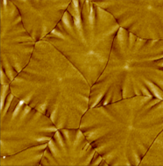
El uso de biopolímeros para la construcción de empaques ha ganado interés como una manera de disminuir los problemas de contaminación y el reciclaje, sin embargo, los cambios que provoca la mezcla de estos polímeros en las propiedades mecánicas y de barrera de películas comestibles ha sido escasamente estudiado. Actualmente la aplicación de películas comestibles se ha convertido en una alternativa para aumentar la vida de anaquel de los productos alimenticios y de esta manera sustituir a los envases plásticos. Por otro lado, los cambios físicos, químicos y microestructurales tanto de la película como del producto adicionado con recubrimiento comestible pueden ser evaluados a través del uso de microscopios de alta resolución, lo que permitiría conocer las interrelaciones estructurales y fisicoquímicas, entre los componentes que conforman la película o recubrimiento y el efecto sobre la vida de anaquel del producto en el cual es aplicado.
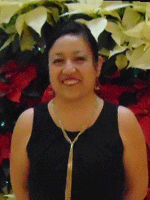
Presentado por la
Dra. Montserrat Escamilla García.
Laboratorio de Biotecnología en alimentos, Departamento de Química, Universidad Autónoma de Querétaro, Querétaro, México.
SmartLitho Creating nanometer sized structures with ease - July 28, 2020
Tuesday, July 28, 2020
- 2:00 pm
SGT
Singapore - 5:00 pm
AEDT
Sydney - 11:00 am
PKT
Islamabad - 11:30 am
IST
Bangalore
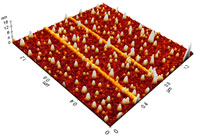
Creating nanometer sized structures with ease
3D image of oxide patterns formed using SmartLitho™.
Atomic force microscopy nanolithography is a convenient technique for structuring, manipulating, and fabricating at the nanometer scale. The new SmartLitho™ software from Park Systems is ideally suited for novel device surface structure development based on nanolithography and for investigations such as ever-decreasing feature sizes on nanoelectronics.
This webinar will show the ease of use of the new Park SmarLitho software and diverse oxide-based nanolithography experiments.

Presented By :
Armando Melgarejo, Park Systems Technical Support Engineer
Armando Melgarejo is an engineer for Park Systems, where he focuses on the installation and support of AFM systems for Park’s research user base. He holds a B.S. in Biotechnology Engineering from Autonomous University of Queretaro, Mexico. During his studies, he also spent a semester doing research in nanotechnology and molecular biology at Czech Technical University in Prague, Czech Republic. Other areas of expertise include diverse characterization techniques (AFM, SEM, RAMAN and IR), genetics and molecular and cell biology.
Better in Vacuum – how high vacuum improves the accuracy of nanoscale AFM characterization (on NX-Hivac AFM) - July 23, 2020
Thursday, 23 July, 2020
- 10:00 am – 11:30 am
(GMT)
London, Dublin - 11:00 am – 12:30 pm
(CEST)
Berlin, Paris, Rome - 17:00pm - 18.30pm
[(GMT+8]
Beijing, Singapore - 18:00pm – 19:30 pm
[UTC+9]
Seoul, Tokyo

Abstract
Performing nanoscale measurements in high vacuum significantly improves the sensitivity and resolution of the acquired data and enhances the material analysis.
Park NX-Hivac AFM is a standalone AFM station performing high vacuum nanoscale measurements. It allows implementing all the main AFM advanced modes in a well-controlled atmosphere and pressure environment. The key feature of the Hivac tool is the possibility to measure samples in high vacuum, strongly reducing the presence of water and/or oxide layers on the surface of AFM probes and samples. This property is ideal for achieving high accuracy when probing AFM signals on the top of atmosphere sensitive samples if compared to standard commercial AFM systems, especially when dealing with electrical (conductive, PFM, KPFM) measurements. The NX-Hivac also allows setting partial pressure of gases inside the AFM chamber (e.g. N2 or Argon) for a better control of the measuring conditions.
The webinar will give a full introduction to the high vacuum AFM functions and will show the easy-to-use pumping station interface. Moreover, some test measurements will be performed in Frequency Modulation AFM.
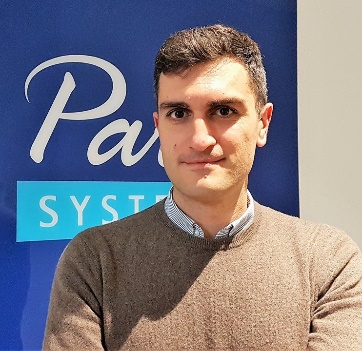
Presented By :
Dr. Andrea Cerreta - Application Scientist Park Systems Europe, Mannheim, Germany
acerreta@parksystems.com
Dr. Andrea Cerreta is an Application Scientists at Park Systems Europe, where he focuses on application development and support for the academic sector. He received his Ph.D. in Physics from the Ecole Polytechnique Fédérale de Lausanne (EPFL), Switzerland. He did his further doctoral work at the Solid State Physics Group of Université de Fribourg, Switzerland, which focused on studying electrical and magnetic properties of organic spin valves and spin polarized currents in superconducting materials, grown by means of Pulsed Laser Deposition, and characterizing the DC and AC transport properties of magnetic and superconducting samples. His expertise also spans the Frequency Modulation Atomic Force Microscopy in UHV for the study of biomolecules.
Pipe Protective Coatings - July 17, 2020
Friday, July 17, 2020
- 9:00 am – 10:00 am
(PDT)
San Francisco, LA - 12:00 pm – 13:00 pm
(EDT)
Boston, New York - 5:00 pm – 6:00 pm
(GMT)
London - 6:00 pm – 7:00 pm
(CET)
Paris, Rome
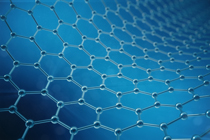
Coatings
Polymer materials are instrumental in creating protective coatings.
The Park Systems 2020 Material Science Research and AFM Webinar Series continues.
Protective coatings are useful for mitigating risk against corrosion, scaling and environmental damage. Protective coatings are both an environmental response and an improvement of barrier properties. A number of polymer and composite polymer materials are used for toughened applications.
This is the fifth webinar in our 2020 Material Science Research and AFM Webinar Series, designed to help researchers understand leading edge developments in Materials Science Research and Applications using Atomic Force Microscopy. To view videos of previous Park Systems’ webinars, click the titles on our webinar page.
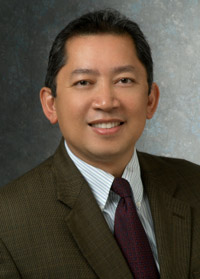
Presented By :
Prof. Rigoberto Advincula, Macromolecular Science and Engineering, Case Western Reserve University
Dr. Advincula is a Professor with the Department of Macromolecular Science and Engineering at Case Western Reserve University and Editor-in-Chief of MRS Communications, Materials Research Society. He was formerly Chair of the Polymer Chemistry Division, American Chemical Society (ACS). He is recognized industry-wide as an expert regarding polymer and materials and is also a member of NACE, SPE, ACS. Dr. Advincula is the recipient of numerous awards including Fellow of the American Chemical Society, Herman Mark Scholar Award of the Polymer Division, and Humboldt Fellow. More recently, he was elected Member of The National Academy of Science and Technology (Philippines). He did Post-doctoral work at the Max Planck Institute for Polymer Research and Stanford University and has published over 500 papers, including 250 peer-reviewed publications, 11 patents (and pending) – H-index of 65 with over 13,000 citations, and has co-edited the book on Functional Polymer Films, Polymer Brushes, and New Trends in Polymer Science.
SmartLitho: Creating nanometer sized structures with ease - July 10, 2020 (Spanish/español)
Viernes, July 10, 2020
*Note: This webinar will be presented in Spanish/español
- 10:00 AM
(CDT)
MEXICO / COLOMBIA - 8:00 AM
(PST)
LOS ANGELES / TIJUANA - 12:00 PM
(UCT)
BRASIL / ARGENTINA - 5:00 PM
(CEST)
ESPANA

La Nanolitografía utilizando microscopios de fuerza atómica es una técnica versátil que permite la creación, manipulación y reposicionamiento de estructuras a una escala nanométrica. SmartLithoTM es el nuevo software de Park Systems que permite el desarrollo y creación de nanoestructuras basadas en nanolitografía. Además, resulta de gran ayuda en investigación para el estudio de compuestos nanoelectrónicos y la creación de estructuras a base de oxido. En este webinar hablaremos de la facilidad de uso del nuevo SmartLithoTM y se analizaran diversos experimentos basados en nanolitografía.

ACERCA DE NUESTRO PANELISTA :
Armando Melgarejo
Armando Melgarejo es ingeniero de soporte en Park Systems, donde se dedica a la instalación y atención de AFM al nivel de investigación y posgrado. Tiene un título en ingeniería en Biotecnología de la Universidad Autónoma de Querétaro, México. Durante sus estudios hizo un semestre de investigación en la Universidad Tecnica de Czechia en Praga, Republica Checa; donde se especializo en nanotecnología y biología molecular. Entre sus áreas de experiencia se encuentran diversas técnicas de caracterización (RAMAN, AFM and IR), inmovilización de enzimas, genética y biología celular.



